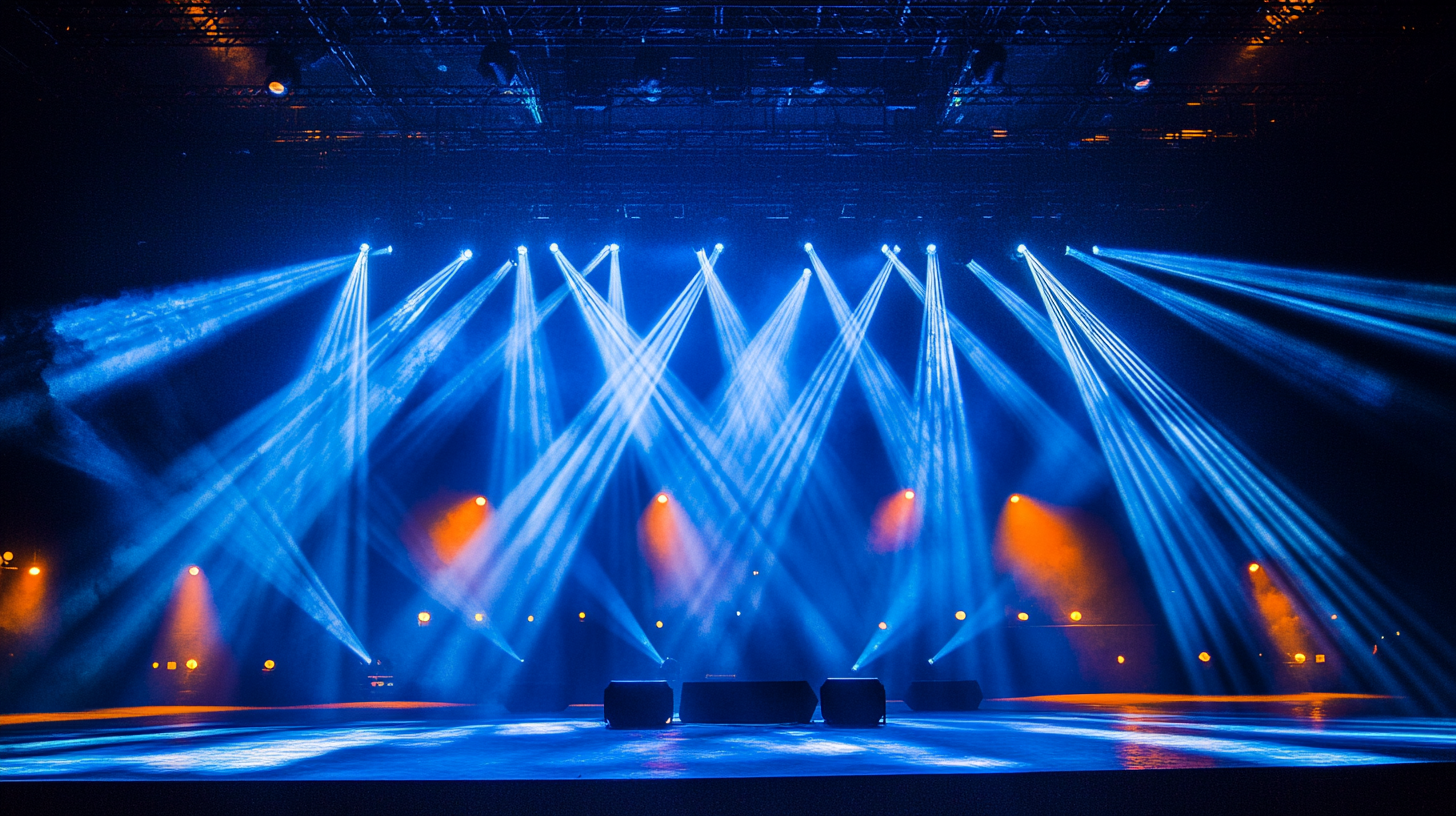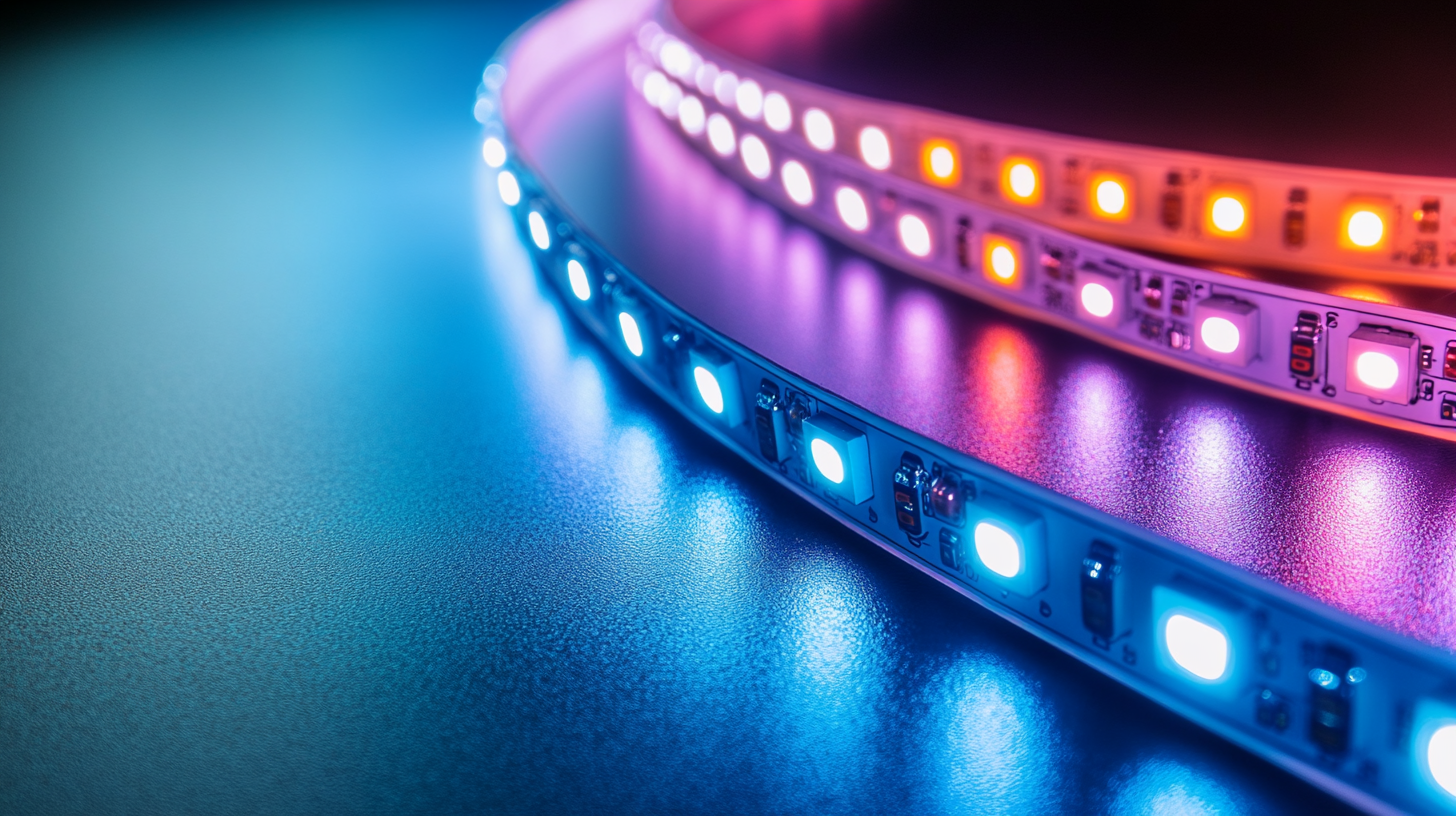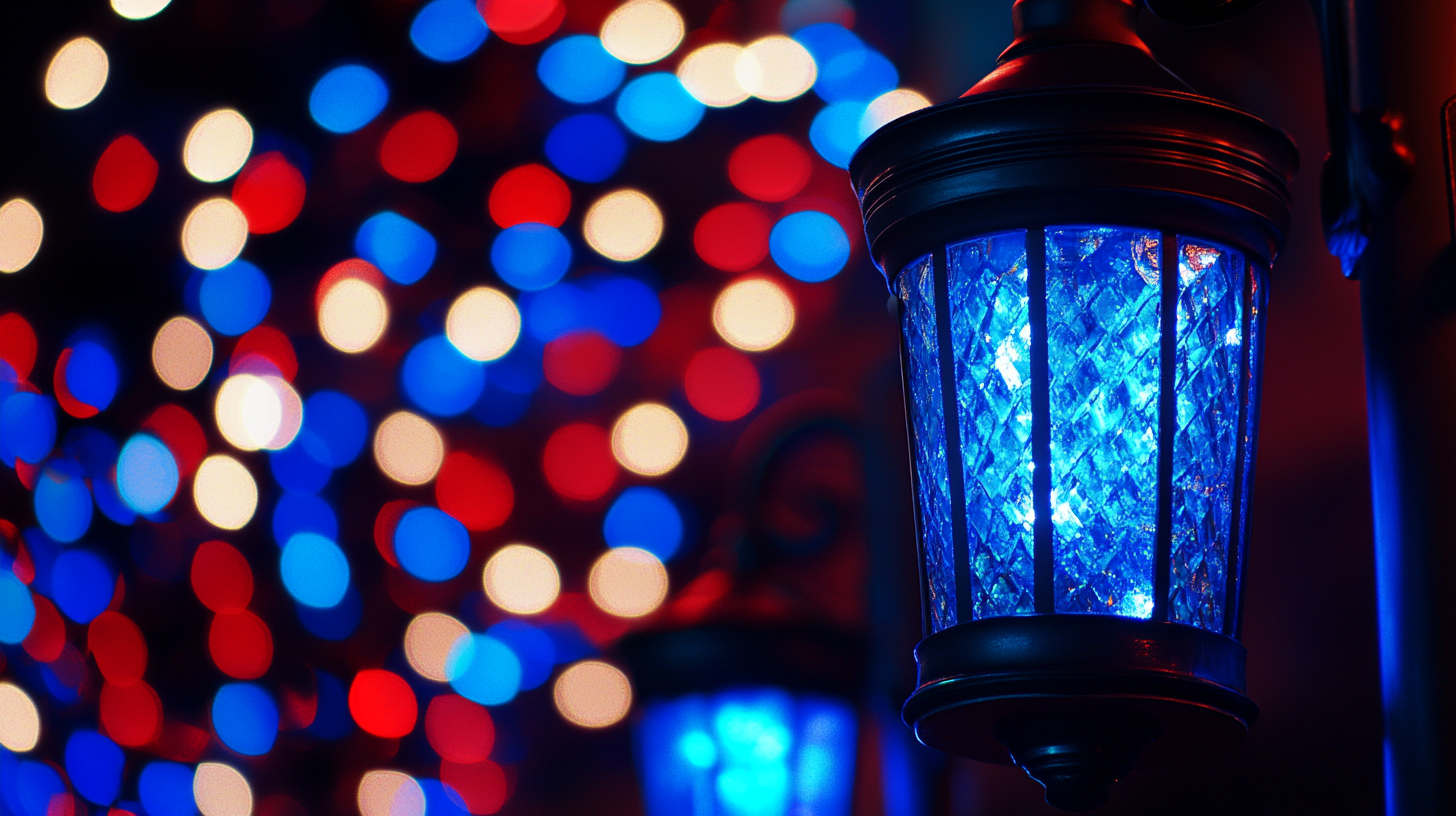Understanding Accent Lighting Production Standards for Global Buyers
Accent lighting is fundamental to current design philosophy, bridging the aesthetic-functional divide in any setting. Accent lighting has found its way into almost every conversation around interior and exterior design, being especially important now that the lighting solution markets are burgeoning. As per the report by Grand View Research, the global lighting market is expected to touch $180 billion by 2027, much of that being driven by accent lighting, which is specifically used for highlighting architectural features and setting a mood. Industry experts stress how effective accent lighting creates a visual interest as well as affects consumer behavior, making it imperative for buyers who are intent on improving their return on investment.
Furthermore, with the advancement of energy efficiency needs, sustainability, and versatility, production standards surrounding designs for accent lighting are being revised. The IEA reported that LED lighting could obtain the lion's share of the global lighting market (75%) by 2030, which marks a clear shift toward either more efficient accent lighting measures. As global buyers find themselves negotiating this environment, being aware of the varying production standards by region and thereby ensuring compliance and quality really becomes imperative. This blog will investigate the subtleties related to accent lighting production standards, thus availing itself to the buyer interested in enhancing his offerings and aligning with the industry best practices.

Overview of Accent Lighting: Definition and Importance in Modern Design
It refers to the application of lighting to create an environment with special moods or atmospheres. When accent lighting is applied to highlight certain features of a space, it does more than illuminate. It breathes life into the interiors. Industry reports state, good accent lighting can add 30 percent visual appeal to a space hence serves both residential and commercial purposes. Due to this trend of contemporary design, accent lighting plays a more prominent role in the increasingly multifunctional space in which the designer has to cater to many needs. In the recent exhibition "百年上海设计展," exhibit spared much attention upon the various lighting choices belonging to accenting that will narrate the tale behind a space and its historical culture. The combination of modern accent lighting accentuates architectural features while telling the interior space about the city and its history and aesthetic. Moreover, with changing consumer tastes away from decor and toward immersive and experiential living, accent lighting continues to take center stage, designers relate. The shift toward advanced projects where designers create comfortable atmospheres reflecting a profound cultural heritage by marrying historical aesthetics with contemporary functionality seems to be an effective market strategy. Its findings indicate alterations in light can greatly influence the mood and perception of a room, which accent lighting surely plays a major role into modern design.

Key Production Standards for Accent Lighting: Understanding Compliance and Certifications
Understanding production standards is, of course, pivotal for global buyers wishing to comply with and obtain certification for their accent lighting. The DarkSky Approved program is important among the various standards gaining traction. This certification maintains that lighting solutions minimize glare and limit light trespass, allowing lighting pollution to be better handled. Hence, when buyers purchase accent lighting fixtures that carry the DarkSky Approved seal of approval, they do so not only for aesthetic value but for environmental altruism.
The impending adoption of stringent Title-24 energy code requirements enforceable in California will greatly influence the manufacturers and designers in implementing lighting and controls requirements. With these regulations set to evolve, they will define higher levels of expectation for energy efficiency and sustainability from a public perspective within the general lighting community. Buyers have to remain up to date with such developments to guarantee that any chosen lighting will become an influential consideration in their purchase decisions.
Integration of such standards is crucial, especially for large construction projects. As an example, recent developments have seen heavy investments in projects intended for LEED certification. On that front, meanwhile, the trend of making functional lighting fit well into sustainability is blossoming. Buyers of accent lighting should be concerned about these certifications and standards as features that guarantee their choices do not just beautify a room but meet the highest industry standards of quality and sustainability.

Global Market Trends in Accent Lighting: Demand Growth and Consumer Preferences
The global accent lighting market is undergoing a significant shift due to changing consumer preferences and emerging technology trends, specifically the innovative LED-based technologies. The market for accent lighting is expected to witness rapid growth with advances in Quantum Dot LED (QLED) technology with very high color accuracy and brightness along with energy efficiency. In addition, if consumers demand attractive environments, they will look for sophisticated accent lighting to develop that environment.
In addition, the global LED lighting market is projected to grow exponentially at a great compound annual growth rate (CAGR) in the coming years, reflecting further consumer inclination towards energy-efficient lighting. It also represents that general-minded consumers are moving towards the trend of being more sustainable as well as having a better life quality. This will also lead to the increased popularity of the adoption of LED illumination in different applications, even for home and commercial purposes. Accent lighting also adds mood and defines the architecture. Therefore, the manufacturers will be inclined to design products that meet the needs and expectations of the consumers in terms of aesthetic designs and functionality.
With an increased awareness about the need of accent lighting in beautifying visual experiences, especially in the retail and hospitality sectors, it has become an essential part of "mood setting" and spotlighting within the strategic framework of marketing towards customer engagement. The changing nature of the market will demand global buyers to be sensitive to consumer tastes and preferences for innovative designs and sustainable technologies in the area of accent lighting.

Environmental Considerations: Sustainable Practices in Accent Lighting Manufacturing
Indeed, accent lighting is a great consideration in terms of space aesthetics. Global citizens are now becoming more and more aware of environmental issues, thus making sustainability in accent lighting manufacture an area that cannot be ignored. More than eight billion global populations are a huge factor in the demand for lighting solutions, which is making the manufacturers rethink their production processes. According to an International Energy Agency report, buildings are accountable for almost 40% of global energy consumption, which puts the lighting industry on an underlying high demand for the need for sustainable lighting solutions that can save energy.
It is not just about energy efficiency; but sustainable practices are also needed in the accent lighting industry. The United Nations cites the need to sustain sourcing and production methods to make way with the climate targets. For instance, use of materials with lower environmental footprints may include biodegradable plastics or recycled metal, which could help alleviate the harmful effects on our planet. Sustainable production complies with the norms set by international organizations and gives an increasing endorsement for consumer preference towards green products, as reported by Nielsen, where 73% of millennials are ready to pay more for environmentally friendly offerings.
Moreover, there are various initiatives in the industry such as the "Sustainable Textiles Manufacturing and Eco-Label" project financed by EU funds that point towards the global trends on conscious print manufacturing in sectors. In sum, these practices demonstrated a wider move in the accent lighting industry towards socially responsible manufacturing and the phase-out of practices such as "greenwashing." Since the market is evolving to meet these standards, companies must ensure that they are transparent and genuine in their sustainability claims, so that consumers can make informed choices that ultimately lead to a healthier planet.
Technical Specifications: Lumens, Color Temperature, and Energy Efficiency Standards
Global buyers should also understand the technical specifications concerning accent lighting since these elements are relevant in meeting certain aesthetic and functional desires. Lumens, which measure the total quantity of visible light emanating from a source, would be one of these. According to a report by the U.S. Department of Energy, LED lights generate 80-100 lumens per watt approximately, thus making them energy efficient for accent lighting. Having taken that into consideration, the buyer should then look for fixtures that give out more lumens when strong illumination for focal points is desired at an energy-saving level.
The other important factor is color temperature, which is measured in Kelvin (K). This specification governs the environment created by lighting to a great extent. Warm white light (2700K-3000K) is relaxing and friendly; cool white (4000K-5000K) works in contemporary environments. Studies have shown that different color temperatures affect moods and perceptions in spaces. For instance, an article published in the Journal of Environmental Psychology states that warmer tones can enhance relaxation while cooler tones promote focused work.
Energy efficiency standards are also of paramount importance; standards set by organizations like the Illuminating Engineering Society (IES) focus on reducing energy consumption. Products compliant with the energy star program would indicate that these accent lighting products provide sound lumen output while also fulfilling some severe energy-saving requirements. Hence, the buyer should search for products related to these standards, which would generally require a minimum 70% energy savings versus standard incandescent lighting. Hence, promoting these specifications-lumens, color temperature, and energy efficiency-marks for enhanced design of lighting projects while sustaining eco-friendly practices.
